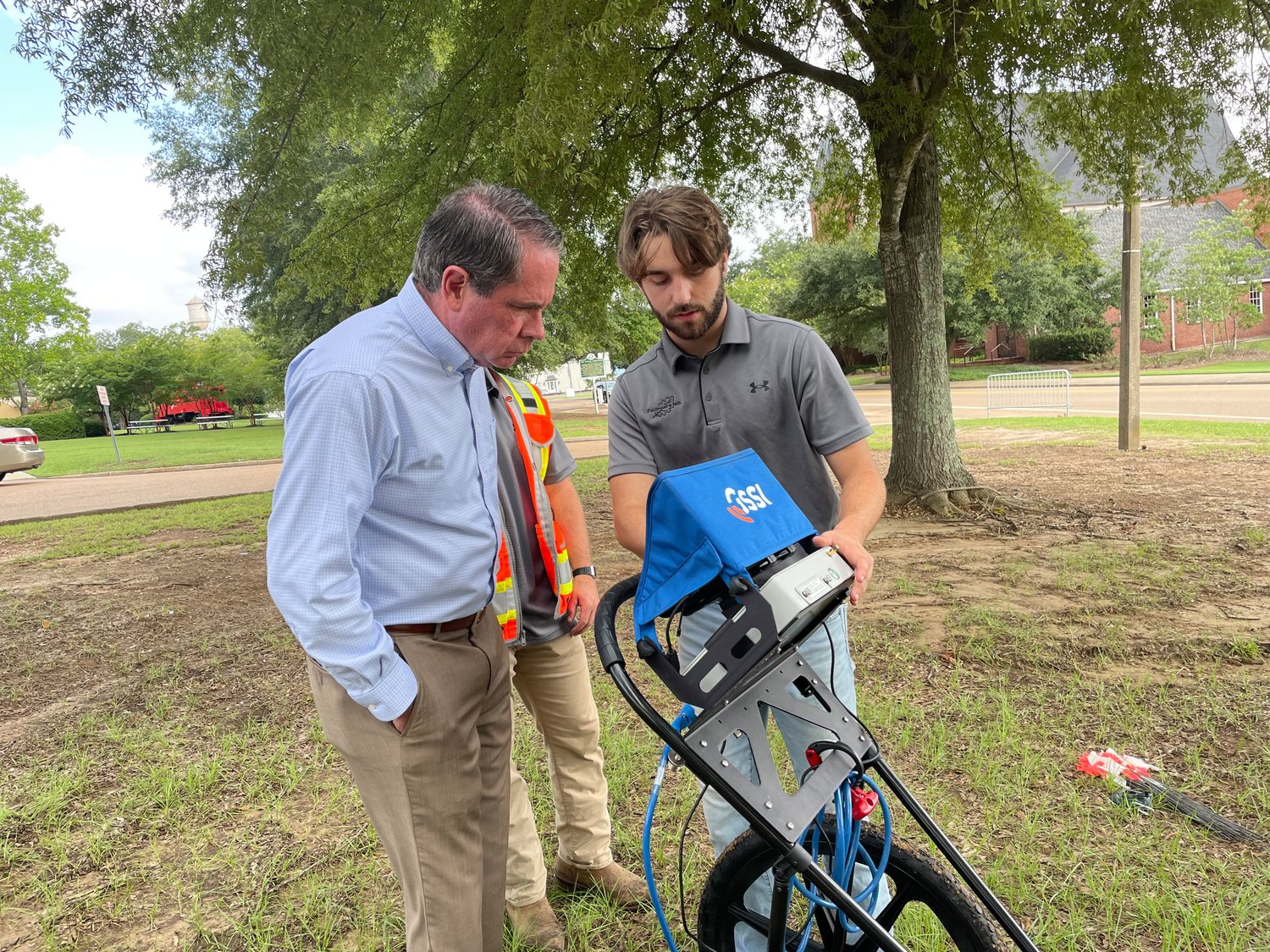‘MRI’ for trees aims for preservation
MADISON — Preserving old trees is behind brand new root mapping technology used on one of the willow oaks outside the historic old school gymnasium on Main Street this week.
Alan Hoops, director of environment and design for the city of Madison, said that he is not sure if they will make use of the technology as they are still deciding how to develop the old Madison-Ridgeland High School property at U.S. 51 and Main Street but noted that the technology was “impressive” and that he could see projects that would benefit from the root mapping technology.
“We want to be sure to keep these trees as we develop this property for the future,” Hoops said.
Tupelo’s Fulghams Tree Preservation demonstrated the their new Tree Radar Unit, also known as TRU, on Aug. 3, at 9 a.m.
“They called and wanted to do a demonstration for us and we thought these were the best trees to do it on,” Hoops said.
Ben Kahlmus. an arborist with Fulghams Tree Preservation, said the TRU system is an established technology used in tree risk assessment and root mapping.
He said the system does not disturb soils or injure roots, which allows repeated measurements that reveal long-term root system development or decline.
The portable radar imaging system creates accurate non-invasive images of the internal trunk and subsurface surface root mass. The TRU proves an "MRI" for trees and can determine internal decay and produce high resolution mapping for the entire trunk,Kahlmus said.
“This technology is new to Mississippi and will be a game-changer for tree preservation and development,” Kahlmus said.
Coby Bell and Micah Fulgham were on hand to demonstrate the technology. They carefully circled the tree in two feet increments.
Bell said their readings gave them information such as the depth and density of the roots. He said the reading could also be fed into a program to generate a three dimensional image of the root system of the tree.
This image can then be super imposed on architectural renderings and other drawing of the area to see how the root system will be affected by proposed buildings, parking lots and other features.
Fulgham said they can also apply the scanner directly to the tree and quantify issues like trunk decay.
He said they have had the system since the beginning of the year and have been “very busy” using and demonstrating it for about three months now.
The system works for both residential and commercial projects. He said they have already seen projects on the Coast including getting readings on the historic Ruskin Oak in Ocean Springs, a live oak estimated to be over 350 years old.



